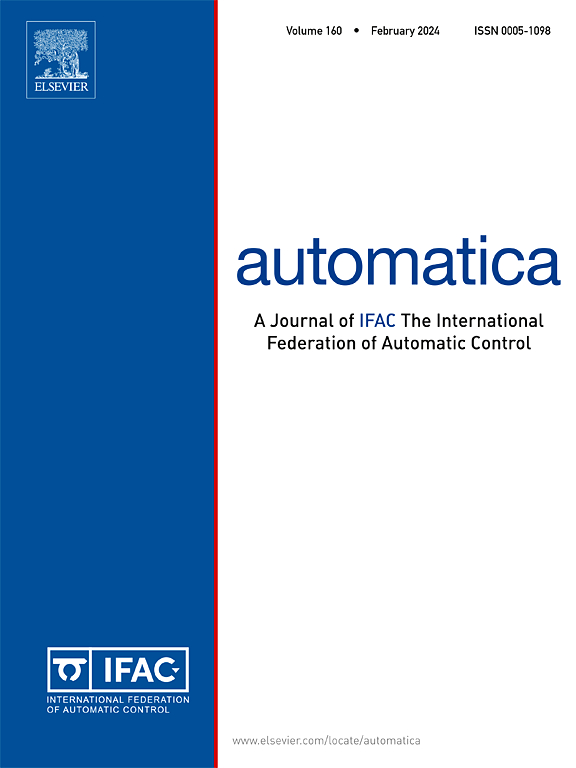Mean field hierarchical control for production output adjustment with noisy sticky prices
IF 4.8
2区 计算机科学
Q1 AUTOMATION & CONTROL SYSTEMS
引用次数: 0
Abstract
This paper is concerned with the hierarchical decentralized solution to mean field production output adjustment. We first introduce a mean field output adjustment model for many firms in a market, where the price is sticky and regulated by a government. Under a given policy of the regulator, we first tackle a centralized game problem, and obtain a system of coupled forward–backward stochastic differential equations (FBSDEs). By decoupling the high-dimensional FBSDEs, a Nash equilibrium strategy is designed for competitive firms. After applying firms’ strategies, we construct a decentralized strategy of the regulator by solving an optimal control problem driven by FBSDEs. By perturbation analysis, the proposed decentralized strategy is shown to be an -Stackelberg equilibrium.
有噪声粘性价格下产量调整的平均场分层控制
研究平均油田产量调整的分层分散求解方法。我们首先引入了市场中许多公司的平均油田产量调整模型,其中价格具有粘性并受政府监管。在给定的调节器策略下,我们首先解决了一个集中博弈问题,得到了一个耦合的前向后随机微分方程(FBSDEs)系统。通过对高维FBSDEs进行解耦,设计了竞争企业的纳什均衡策略。在应用企业策略之后,我们通过解决由FBSDEs驱动的最优控制问题,构建了一个分散的调节器策略。通过摄动分析,证明了所提出的分散策略是一个i -Stackelberg均衡。
本文章由计算机程序翻译,如有差异,请以英文原文为准。
求助全文
约1分钟内获得全文
求助全文
来源期刊

Automatica
工程技术-工程:电子与电气
CiteScore
10.70
自引率
7.80%
发文量
617
审稿时长
5 months
期刊介绍:
Automatica is a leading archival publication in the field of systems and control. The field encompasses today a broad set of areas and topics, and is thriving not only within itself but also in terms of its impact on other fields, such as communications, computers, biology, energy and economics. Since its inception in 1963, Automatica has kept abreast with the evolution of the field over the years, and has emerged as a leading publication driving the trends in the field.
After being founded in 1963, Automatica became a journal of the International Federation of Automatic Control (IFAC) in 1969. It features a characteristic blend of theoretical and applied papers of archival, lasting value, reporting cutting edge research results by authors across the globe. It features articles in distinct categories, including regular, brief and survey papers, technical communiqués, correspondence items, as well as reviews on published books of interest to the readership. It occasionally publishes special issues on emerging new topics or established mature topics of interest to a broad audience.
Automatica solicits original high-quality contributions in all the categories listed above, and in all areas of systems and control interpreted in a broad sense and evolving constantly. They may be submitted directly to a subject editor or to the Editor-in-Chief if not sure about the subject area. Editorial procedures in place assure careful, fair, and prompt handling of all submitted articles. Accepted papers appear in the journal in the shortest time feasible given production time constraints.
 求助内容:
求助内容: 应助结果提醒方式:
应助结果提醒方式:


